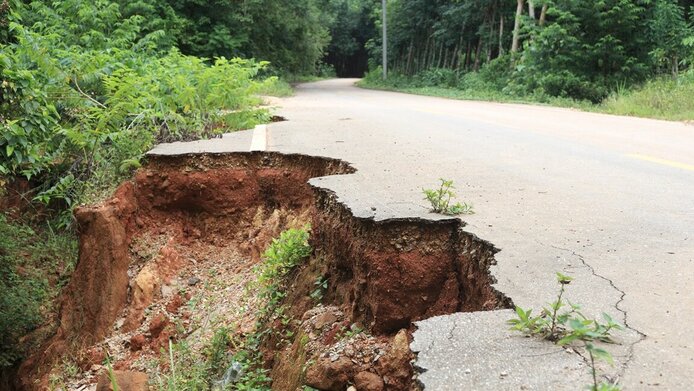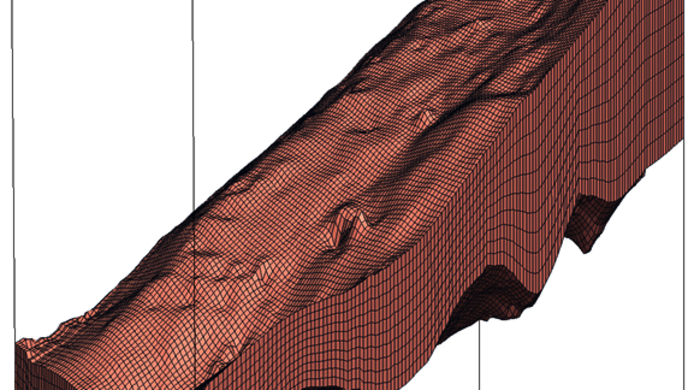New model makes landslides easier to predict

Landslides are always good for a surprise – because despite intensive studies and research, their occurrence is still unpredictable. Researchers working on a project funded by the Austrian Science Fund FWF have succeeded for the first time in numerically simulating the fundamental physical processes that have a strong influence on slope stability and incorporating them into simulations and model calculations. This represents a milestone in the reliable prediction of landslides and slope failures.
The power of water
The physical processes, which Principal Investigator Wei Wu and his team from the Institute of Geotechnical Engineering at the University of Natural Resources and Life Sciences, Vienna, have examined, are closely related to the water content of the soil on a slope. Wu explains: "With rising saturation, the water pressure in the soil pores gives rise to reduced soil strength." However, despite the fact that all the alarm bells ring when there is an increase in water pressure in a slope accompanied by reduced stability, it was not possible to calculate or model these processes up to now. "These are highly complex processes which are made even more complex by the soil fabric. Soil is a three-phase system consisting of soil particles, air and water and the basis for the calculation of each phase is different. The models available up to now were unable to take account of this complexity," notes Wu.
From California to Vienna
Thanks to his international network, Wu was able to obtain a special computer code which was developed at Stanford University in California. This code enabled the team, along with its project partner Ronaldo I. Borja from the Department of Civil and Environmental Engineering at Stanford University, to make the key criteria behind the complex processes in the soil accessible in the form of a numerical simulation for the first time. To facilitate this, the code was further developed for its application to unsaturated porous soils. In this way, the scientists succeeded in calculating how spatially separate areas with different levels of water saturation can affect the emergence of localised failure in slopes.
Model validation
"The calculations were validated with comprehensive model tests," reports Wu. "These proved that our theoretical calculations provided a very accurate description of the actual processes at work here. Numerous different conditions were considered in the model validation. Precipitation intensity emerged as having a very important impact on slope stability," says Wu. "Many slope failures are actually triggered by rain," he adds. To carry out the model tests Wu's team availed of special centrifugal technology in a climate chamber. A miniature model of slope was created in the chamber and instrumented which enabled the testing of the actual subsurface conditions.
Model test
As Wu explains, the team gained comprehensive insights from these complex model tests: "We learned a lot about the mechanism that leads to the actual rupture in the slope structure. We succeeded in calculating the energy mobilised by the process and, based on this, the emergence and propagation of slip surfaces. These are areas, in which the soil strength is lower than in the surrounding areas." Another important finding of the study was that even minor changes in the water content can have a significant impact on the soil stability. This model, which was developed as part of a project funded by the Austrian Science Fund FWF, could help to identify potentially hazardous slopes in future and thus enable their more efficient monitoring. It can also be used in software for the reliable calculation of slope stability.
Personal details Wei Wu is Head of the Institute of Geotechnical Engineering at the University of Natural Resources and Life Sciences, Vienna. He is an internationally renowned expert for the numerical modelling of geotechnical processes and for laboratory testing and modelling of granular matter.
Publications






